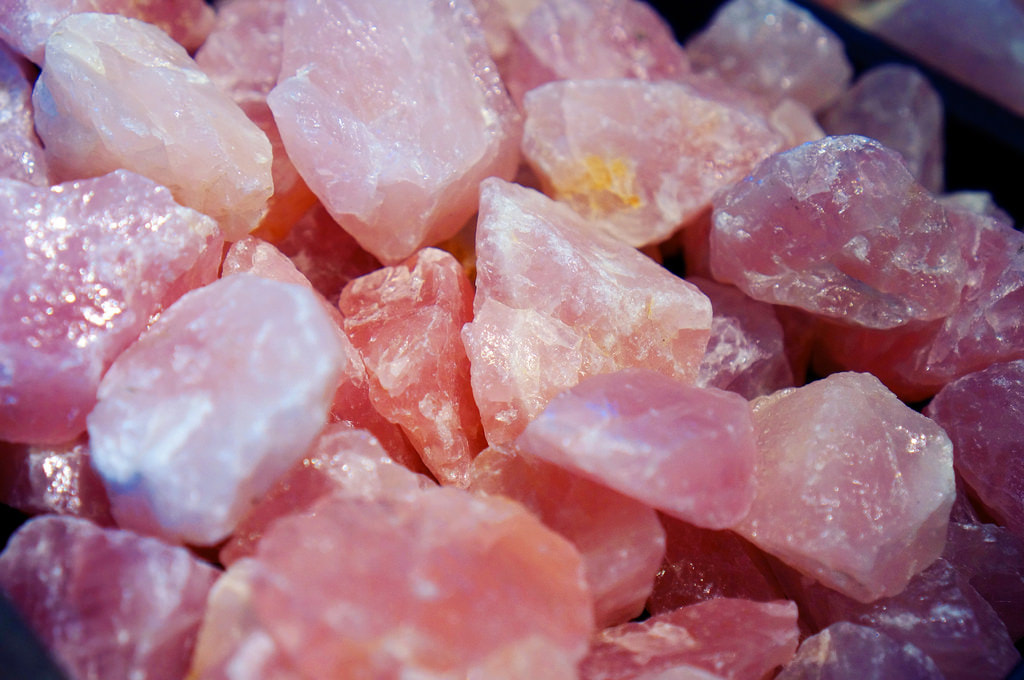

The usual suspects are iron, titanium, and manganese. The coloring agents in different pieces of rose quartz are up for debate. While pink might seem to be a rare color in nature, what it really boils down to in stones is that pink is a very dilute red. They can also be found in a huge variety of sizes, a rarity when most minerals are limited to smaller sizes by the nature of their formation. The massive nature of rose quartz is good for one thing: it means virtually every staple of the rock trade (ie: carved points, spheres, palm stones) is available for only a touch more than the cost of labor. Of course, there are also dyed quartz points out there for the unwary to snatch up thinking that they’re getting something rare. It’s all quite complicated when you get down to it, but it’s technically not rose quartz despite the superficial similarities. This crystalline form is often called pink quartz, or “crystallized rose quartz” and will lose color when exposed to light.

Those available on the market currently are actually a different type of stone, with its own inclusions, that is photosensitive. Indeed, Rose Quartz rarely occurs as a natural point or other immediately recognizable crystalline forms. Instead, most Rose Quartz is a bunch of interlocked crystals creating a large mass. This makes Rose Quartz an ideal medium for hardstone sculptures and other large-scale uses that are rarely seen.

Instead, Rose Quartz often occurs in enormous masses that are inches to feet across. When most of us think of quartz, we think of the smaller points that are available at every rock shop.


 0 kommentar(er)
0 kommentar(er)
